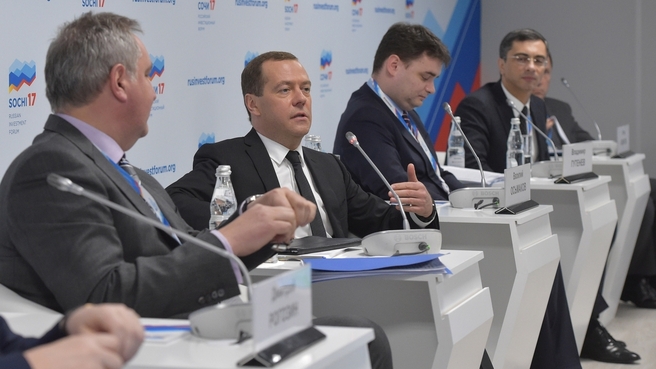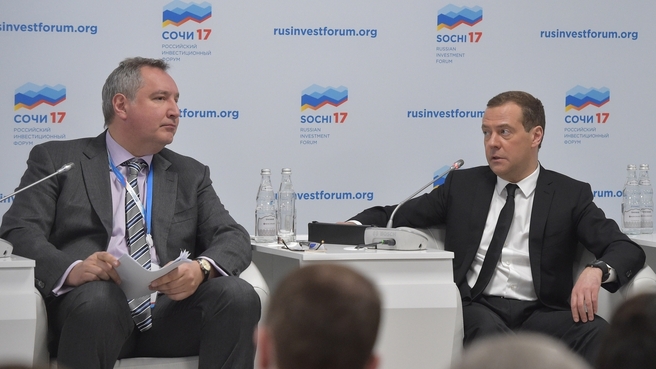The roundtable was held as part of the Sochi 2017 forum.
Excerpts from the transcript:
Dmitry Medvedev:
Roundtable discussion Defence Industry Diversification and Regional Development: A Strategy for Change
We have plans to finish large-scale re-armament by 2020, to reach a certain level of equipment provision.
The experience of other countries can hardly be applied here, not in full at any rate.
A considerable number of the technologies that blew up the technology world (such as the internet, GPS or those very same sensors) entered the market from the defence industry. And which road is taken depends largely on us.
The share of civil and dual-purpose products should reach at least 30 percent of overall output by 2025, and at least 50 percent by 2030. The number stood at around 16–17 percent last year.
To achieve this, the division between the defence industry in the narrow sense and innovative entrepreneurship should be broken down. The defence industry should apply more innovative solutions. This is a mechanism we still have to create.
We have to analyse our needs, identify priorities for the diversification of organisations which are suppliers for the state defence order: what should be emphasised, which industries have to be preserved for mobilisation needs after the active work on re-arming with modern equipment is for the most part complete.
Lastly, this involves the transition of the military-defence complex to a modern business management model, which presupposes a fairly reasonable level of profitability. High-tech markets are crammed with competitors. Nobody is waiting for us anywhere, including the area of weapons and high-tech civilian products. Nevertheless, we should prepare those niches for ourselves, in some cases just to ram the existing barriers, to master the use of protective measures, including those within the WTO, and to skillfully subsidise supplies, including exports. If needed, guarantee mechanisms should be applied. In this case we will certainly be able to make a breakthrough.
Defence enterprises remain a foundation of knowledge-intensive production in our country, they make up a significant share of exports, and our task is to preserve all these competitive advantages. At the same time we need to build a new business model adapted to the conditions of the present-day market, both domestic and foreign markets.
<…>








